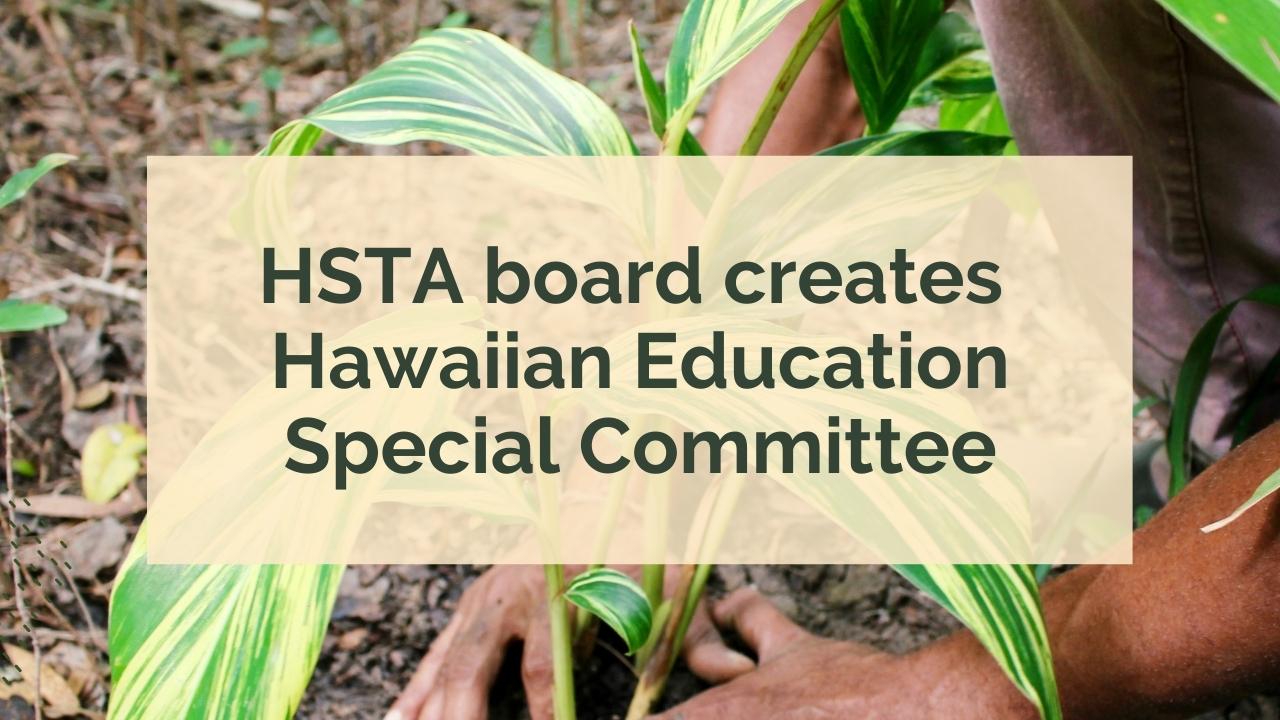Apply to serve as chair, members of the committee
Posted: September 2, 2022
The Hawaiʻi State Teachers Association Board of Directors has voted to create a Hawaiian Education Special Committee to research, inform and lead HSTA work in Hawaiian education.
Hawaiian education refers to education that is rooted in and perpetuates ʻŌlelo Hawaiʻi (the Hawaiian language) and ʻike Hawaiʻi (Hawaiian language, culture, history, and practices).
HSTA President Osa Tui, Jr. said, “While the state has made progress in Hawaiian education in recent years, there is still much work to be done and HSTA is committed to advancing the cause of reclaiming and restoring ʻŌlelo Hawaiʻi and ʻike Hawaiʻi in our schools.
“Establishing the Hawaiian Education Special Committee is a major step toward organizing kumu (teachers) within HSTA, and advocating for Hawaiian education in ways that support current organizations and efforts via avenues that are unique to the union, such as collective bargaining,” Tui added.
If you are an HSTA member who is knowledgeable about Hawaiian education and an active advocate who is interested in serving on the committee, or would be willing to serve if asked, please fill out this form.
The committee will be made up of one chair and as many as 10 members from across the state. In consultation with Hawaiian education educators, Tui will appoint members of the committee and the chair, who will be approved by HSTA’s Board of Directors.
HSTA UniServ Director Ilima Long will serve as the staff liaison for the committee. Prior to HSTA, she held a faculty position in the Native Hawaiian Student Services office at the University of Hawaiʻi at Mānoa. Long is also a makua (parent) of a student at Ke Kula Kaiapuni ʻO Ānuenue and serves as a parent representative on the ‘Aha Kauleo.
Hawaiian education and knowledge were systematically marginalized following the overthrow of the Hawaiian Kingdom in 1893 and the subsequent illegal annexation to the United States in 1898. Beginning in territorial Hawaiʻi, public education served to pacify the resistance of their parents’ generation by assimilating Hawaiian children and children from plantation cultures to U.S. ideals and culture.
The period of cultural revival and intensified activism in Hawaiʻi of the 1970s and ’80s, known as “the Hawaiian renaissance,” sparked a movement to bring ʻŌlelo Hawaiʻi and ʻike Hawaiʻi back to the keiki of Hawaiʻi. These efforts led to an amendment to the state constitution in 1978 mandating Hawaiian education, saying the state “shall provide for a Hawaiian education program consisting of language, culture, and history in the public schools.”
In 1984, the first Pūnana Leo (Hawaiian language immersion preschool) opened its doors in Kekaha, Kauaʻi; and the first two kula kaiapuni (Hawaiian language immersion schools within the DOE) opened in 1987 in Keaukaha, Hawaiʻi and Waiau, Oʻahu.
Today there are 22 kula kaiapuni and six Hawaiian language immersion public charter schools (see a full list here). Through various models of Hawaiian immersion education at elementary, middle and high schools, six of the eight major islands provide a K–12 immersion experience.
Hawaiian history is taught to all keiki in grades 4, 7, and high school, and ʻāina-based education is growing at schools across the islands. After years of advocacy by kumu (teachers), mākua (parents), haumāna (students), and ke kaiāulu (the community), the Board of Education established the Office of Hawaiian Education within the office of the superintendent in 2015.

